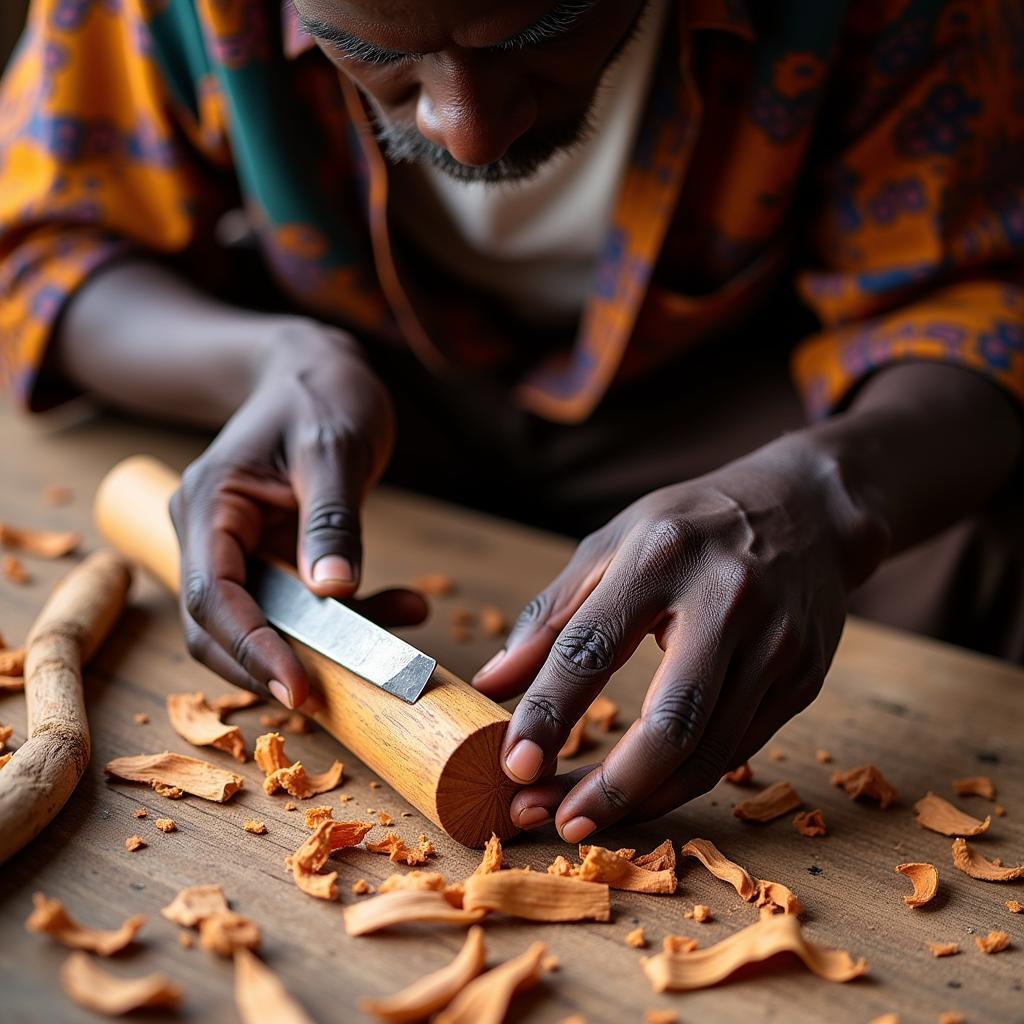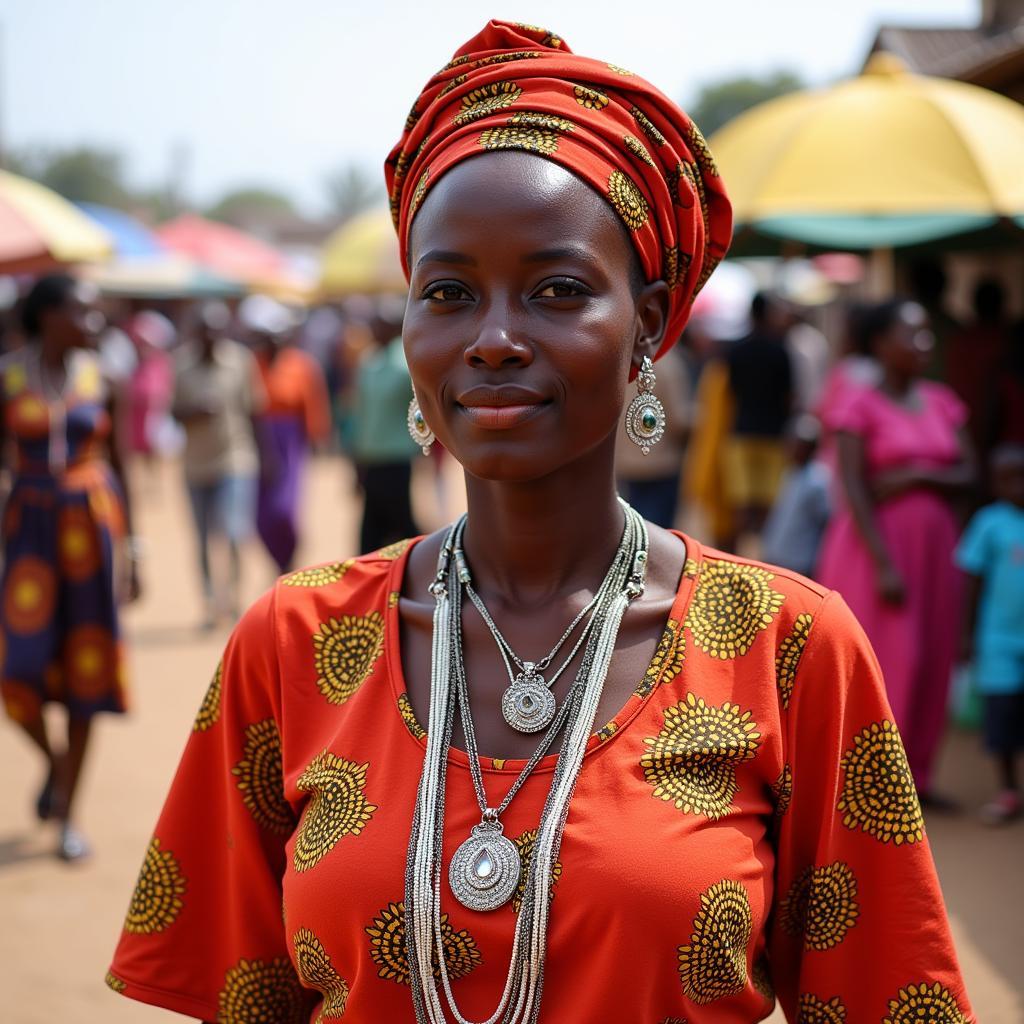A Journey Through Time: Exploring African Arts and Crafts History
African arts and crafts hold a captivating history, intricately woven into the continent’s diverse cultures and traditions. From ancient rock paintings to intricate beadwork, each creation reflects the unique stories, beliefs, and values of its people. This journey through time explores the rich history of African arts and crafts, showcasing the creativity and ingenuity that have thrived for millennia.
Unveiling the Past: Ancient Roots of African Art
The history of African art and craft dates back thousands of years, with some of the earliest examples found in the form of rock art. The Sahara Desert, once a lush landscape, holds a treasure trove of prehistoric paintings and engravings. These ancient masterpieces offer glimpses into the lives of early humans, depicting animals, hunting scenes, and even rituals.
As civilizations emerged across the continent, so too did distinct artistic styles. In ancient Egypt, for instance, artisans perfected the art of hieroglyphics, intricate carvings, and majestic sculptures that continue to awe and inspire. Similarly, the Nok culture of ancient Nigeria left behind terracotta sculptures renowned for their expressiveness and technical mastery.
Beyond Utility: The Cultural Significance of African Crafts
African arts and crafts are more than just objects of aesthetic beauty; they are deeply intertwined with the social, spiritual, and cultural fabric of communities. Every region in Africa boasts its own unique traditions, each telling a story passed down through generations.
Take, for example, the intricate beadwork of the Maasai people in East Africa. Beyond their visual appeal, these beads hold deep cultural significance, representing age, social status, and even marital status. Similarly, the African blowgun, found in various parts of the continent, served not just as a hunting tool but also as a symbol of power and prestige.
Materials and Techniques: A Testament to Resourcefulness
African artists and craftspeople have always exhibited remarkable resourcefulness, transforming readily available materials into objects of beauty and function. From wood and clay to metals, textiles, and natural fibers, the continent’s diverse resources have fueled artistic expression for centuries.
Wood carving, for instance, holds a prominent place in many African cultures. The Yoruba people of Nigeria, renowned for their artistic prowess, have long excelled in creating elaborate wooden masks used in rituals and ceremonies. Similarly, the skilled artisans of the Ashanti Kingdom in Ghana are celebrated for their intricate goldweights, miniature sculptures used to measure gold dust.
 African Wood Carving Techniques
African Wood Carving Techniques
From Generation to Generation: Preserving Artistic Legacy
The transmission of artistic knowledge from one generation to the next has been instrumental in preserving the rich heritage of African arts and crafts. In many cultures, skills are passed down through families or apprenticeships, ensuring the continuity of traditions and techniques.
However, the influx of mass-produced goods and changing lifestyles pose challenges to the sustainability of these traditions. Despite these hurdles, many contemporary African artists and craftspeople are embracing innovation while staying true to their cultural roots. By incorporating new materials, experimenting with modern designs, and exploring new markets, they are ensuring that African arts and crafts continue to thrive in the 21st century.
FAQ: Delving Deeper into African Arts and Crafts History
1. What are some of the most iconic examples of ancient African art?
Some of the most iconic examples of ancient African art include the Great Sphinx and the Pyramids of Giza in Egypt, the rock art of the Sahara Desert, and the terracotta sculptures of the Nok culture in Nigeria.
2. How do textiles reflect African culture?
Textiles play a significant role in African culture, often used for clothing, ceremonies, and storytelling. From the intricate kente cloth of Ghana to the vibrant mudcloth of Mali, each textile tells a story and reflects the unique identity of its creators.
3. What is the role of music in African arts and crafts?
Music and dance are integral parts of many African cultures and often accompany artistic creation. The rhythms and melodies of traditional music inspire artisans and infuse their work with a sense of vibrancy and life.
Exploring Further:
For a deeper understanding of African coral bead jewelry sets and their historical significance, you can explore our dedicated article on the topic.
To learn more about the cultural landscape of Africa, including insights into the African country capital Kigali, visit our comprehensive guide.
Conclusion: Celebrating Enduring Creativity
The history of African arts and crafts is a testament to the enduring creativity and resilience of the continent’s people. From ancient rock paintings to intricate beadwork and sculptures, each creation offers a window into the rich cultural tapestry of Africa. As we continue to learn from and appreciate these art forms, we celebrate the legacy of generations past and support the artists who continue to keep these traditions alive.
For inquiries or assistance with navigating the world of African art and craft, reach out to our dedicated team at +255768904061 or kaka.mag@gmail.com. We are available 24/7 to answer your questions and guide you to the resources you need. You can also find us at Mbarali DC Mawindi, Kangaga, Tanzania, where we’re always happy to welcome you.




